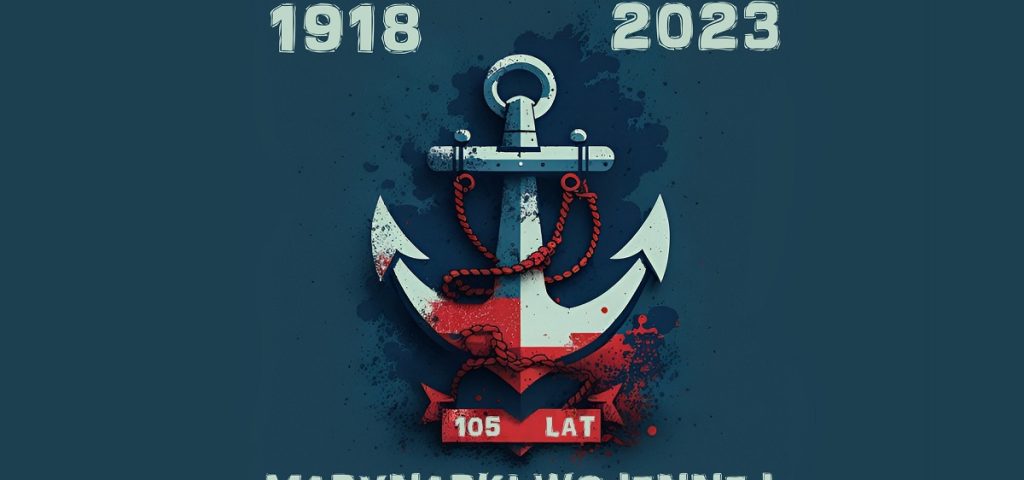105th Anniversary of the Polish Navy
Continuously, for 105 years, it has been guarding the maritime borders of the Republic of Poland and defending the interests of the state in Polish maritime areas. On Tuesday, 28 November, a ceremony will be held in Gdynia to commemorate the recreation of our country’s naval forces after independence.
History of the Polish Navy
Polish naval forces first played an important role in the 15th century. At that time, the Polish caper fleet, during the Thirteen Years’ War with the Teutonic Order, blockaded the Baltic Sea and prevented supplies to Königsberg, defeating the Teutonic fleet in a battle on the Vistula Lagoon (1463). About 100 years later, in 1568, the Sejm established the Maritime Commission – the first in Poland and one of the first in Europe to exercise state authority at sea. Then, at the beginning of the 17th century, Sigismund III Vasa ordered the creation of a royal navy. Ships were built in Gdańsk and Puck. This decision was the first warship building programme.
In 1625, the king established the Royal Ships Commission. Two years later, on 28 November 1627, our fleet achieved victory at Oliwa over the Swedish squadron blockading Gdańsk. Unfortunately, the following years brought a regression in naval policy. The lack of a decision by the Sejm on further financing of the fleet forced the sale of ships, and the partition of Poland soon followed. Attempts to revive the fleet were made during the national uprisings. Unfortunately, the collapse of the uprisings closed the period of hope for the creation of a naval force, if only in foreign countries.
The Navy was reconstituted on 28 November 1918 by Marshal Józef Piłsudski, just 17 days after Poland regained its independence. Poland still waited almost a year and a half to gain formal access to the sea. The development of the fleet was briefly interrupted by the outbreak of the Second World War. The Polish navy participated in the defensive war and then transferred and rebuilt its structures in the United Kingdom and participated in combat operations from the moment the Allies declared war on Nazi Germany. During the hostilities, Polish ships fought continuously from the first to the last day of the war, making a significant contribution to the final victory. They were Poland’s only independent territory and represented the continuity of the state and its arms at sea. In the maritime theatre of World War II, Polish ships sailed a total of one million two hundred thousand nautical miles, escorted 787 convoys, conducted 1162 patrols and combat operations, destroyed 45 enemy vessels and 20 aircraft. 450 sailors were killed during combat operations.
After the war, the navy, although largely based on equipment and facilities produced by the former USSR or coming from the Allied contingent, expanded the fleet on the basis of the domestic shipbuilding industry. After the transformation of the late 1980s and early 1990s and the change in the country’s defence policy, the Navy intensified its cooperation with the fleets of the North Atlantic Alliance countries. The first test of the Polish naval forces was the participation of two ships in Operation Desert Storm. The hospital and evacuation ship ORP Wodnik and the rescue ship ORP Piast were the first Polish ships in the post-war history of Poland to participate in operations with the countries of the North Atlantic Alliance.
The recent history of the Polish Navy is a period of transformation, modernisation and increased mobility. In 1993, the Polish Navy initiated the presence of Polish armed forces in exercises with NATO countries by taking part in the largest Baltic exercise “Baltops”. Since then, the Naval Forces have participated in several hundred manoeuvres of NATO and Partnership for Peace countries. Since March 1999, when Poland became a member of the North Atlantic Alliance, Polish ships have been present at all NATO manoeuvres in the Baltic Sea and have also participated in major operations in the Baltic Straits, the North Sea, the Norwegian Sea, the Atlantic Ocean, in anti-terrorist operations in the Mediterranean Sea and in the Iraqi mission in the Persian Gulf (2002 – 2003). Since 2002, the Polish Navy has been permanently present in the elite NATO Response Force.
Tasks and role of the Navy
The tasks of the Navy are mainly related to ensuring the security of Polish interests at sea and our contribution to the security of Europe within NATO, the EU and other international agreements. This involves the necessity of both national and allied activities, primarily in the area of covering maritime communication routes, especially those through which strategic raw materials and goods are transported, monitoring the safety of navigation, peacekeeping operations, combating terrorism and early detection of symptoms of threats from the sea. In other words, the MW operates in maritime waters for the defence system of the state as well as for its economic security. Through continuous training, it maintains readiness to respond to threats that may occur in territorial waters, the Exclusive Economic Zone, or wherever maritime transport units move. The MW is also a key part of the national SAR marine life-saving system. Without the Navy there would be no Polish nautical charts or other navigational aids, which are developed by the Hydrographic Office of the Navy. Naval forces also assist in the continuous ecological monitoring of the Baltic waters and support disaster recovery operations. Specialised ships, diver-miners and sappers dispose of dangerous objects lying on the bottom of the Baltic Sea and in the coastal zone since World War II. The MW also carries out sapper actions in inland waters, often far from the coast.
Surce: PortalMorski.pl




